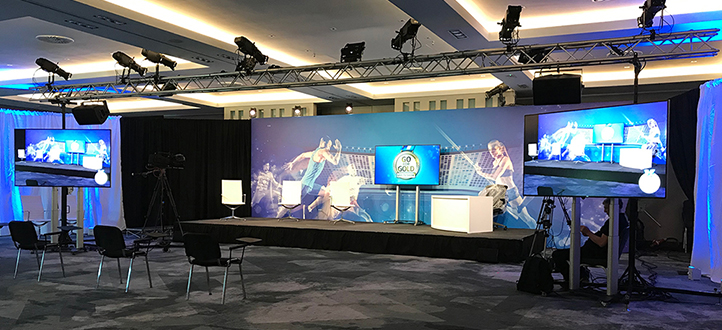Investigating the Benefits and Disadvantages of Static Framework and Portable Display Screens for All Viewing Experience
When it comes to enjoying films, presentations, or video games, the kind of projecting screen utilized can greatly influence the viewing experience. Two common options are stationary screens and mobile projection screens. Both type has its unique set of benefits and disadvantages that can affect which one is best for a specific situation. Comprehending these differences can assist people and organizations make informed choices about their viewing arrangements.Stationary projection screens are crafted to be permanently mounted in a specific location. One of the main benefits of stationary screens is their capability to provide a smooth, flat surface for displaying pictures. This flatness guarantees that the image clarity is crisp and clear, which is especially important for high-definition content. Additionally, fixed frame screens often come with a dark frame that enhances contrast and causes the projected picture pop more. This kind of display is perfect for residential theaters or dedicated display spaces where the configuration will not change frequently.
On the other hand, portable projection screens offer flexibility and convenience. These screens can be easily assembled and taken down, making them ideal for occasions that demand movement, such as meetings, educational settings, or outdoor film screenings. Mobile displays are available in multiple dimensions and styles, including tripod and collapsible choices, allowing individuals to select an option that meets their needs. The ability to transport these screens makes them a popular option for individuals who require to show in various places or for those who do not have a permanent area for a fixed display.
However, there are some limitations to each kinds of displays. Fixed frame displays can be more expensive and require professional installation, which may not be feasible for all. Additionally, after installed, they cannot be moved easily, limiting their use to one place. On the flip side, portable screens may not provide the same level of image clarity as fixed frame displays. They can occasionally have creases or bends that affect the projection, especially if they are not set up properly. This can be a worry for those who value picture clarity over ease of use.
An additional factor to consider is the space available for the display. Stationary displays require a specific space with enough surface area and proper lighting conditions to optimize the watching encounter. This can be a limitation for those living in smaller houses or flats. Mobile screens, however, can be employed in various settings, from large theaters to small living rooms. This flexibility renders them a practical choice for numerous individuals, especially those who may not look at this site have a permanent setup.
To sum up, both stationary and portable projection displays have their unique advantages and disadvantages. Stationary screens excel in providing superior images and a professional appearance, making them appropriate for specific viewing spaces. On the flip side, mobile screens offer flexibility and ease of use, making them perfect for mobile displays and events. By weighing the advantages and disadvantages of both kind, individuals and organizations can select the projecting display that best meets their particular needs and enhances their watching encounter.
